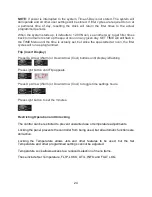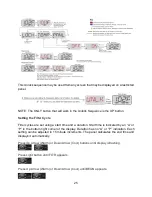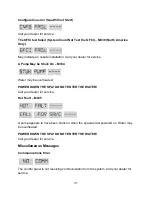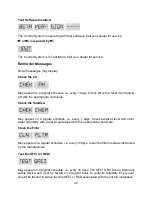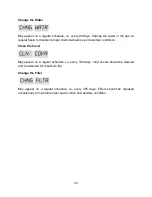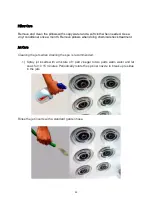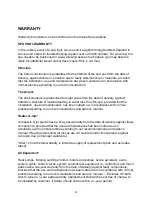
38
Spa Cover Use, Installation and Care
The spa cover has tie down straps and locking hardware at each corner to securely fasten
the cover to the spa cabinet. Proper cover lock installation instructions are included with the
cover to ensure safety compliance.
Never stand or sit on the cover while on or off of the spa and never drag it over
abrasive surfaces. Lift cover only by the handles provided.
Dirt acts as an abrasive to the vinyl topcoat, and can also cause wear to folds, seams
and stitching. Mildew growing on damp, dirty vinyl will begin to actually rot in the fabric,
accelerating failure.
Follow this simple routine for cleaning, prior to application of vinyl.
1) Rinse with cool water using a garden hose.
2) Spray with a gentle, non-foaming cleaner and wipe clean. Never use laundry
detergent, abrasives, alcohols, dish soaps or harsh cleaners. These can actually
remove some of the topcoat and cause premature vinyl failure.
3) For stubborn dirt, use a non-abrasive sponge.
4) Rinse again thoroughly with water and allow to dry.
5) Repeat monthly, or as needed.
The vinyl cover is affected by the UV in sunlight. Periodic protection with a liquid protectant
will extend the life of the spa cover. The wrong kind of protectant can be more harmful than
no protectant at all. Keep any product away from the spa that is labelled “flammable,” that
contains any type of oil, or that leaves a waxy coating on the cover.
Chemical Treatment of Water
Water from the tap is fine for showers, bathing and drinking. However, in a contained
recirculating system such as in a spa, water must be treated with chemicals. The main
purpose of chemical treatment is to keep the water sanitary and to maintain a specific
pH balance of the water. Proper pH balance ensures that the water will not cause
irritation to the users or harm the spa’s components. Chemical treatment does have its
limitations. When water evaporates, chemical residues are left behind.
As the levels of the residues combine with other types of residue, such as body oil and
detergents, the water becomes increasingly difficult to maintain. Because of this
residual effect, at some point it becomes easier and more cost effective to drain, clean
and refill the spa with new water. We recommend that the water be changed at least
every six months. At this time you should also clean or replace the filters. If the spa has
a frequent and/or heavy bather load, it may be necessary to drain and fill the spa
more often. Refer to the section titled “Draining the Spa” for instructions on page
3
4.
WARNING: Spa damage due to improper chemicals use is not covered under
warranty.

